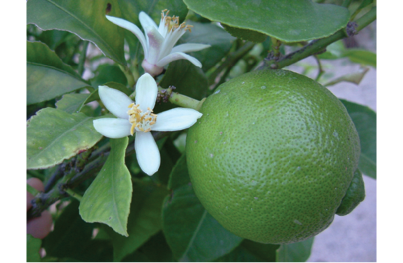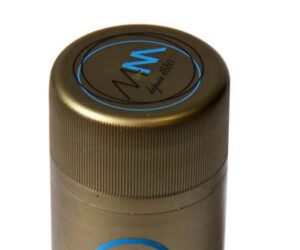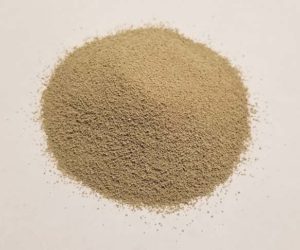Q
I am making a lime wine and I used honey instead of sugar to bring up the brix. I’m doing a 3-gallon (11 L) batch. The recipe that I found said to zest the limes so I zested 21 limes. When I racked it, I tasted and it has a very strong lime peel taste. Is there any way that I can tame that?
Faith Chadwick
Marcellus, Michigan
A
Very, very interesting. I have to say that the zest of 21 limes for three gallons (11 L) of liquid seems like a lot of lime-y-ness to me! I can only imagine that indeed, it did have a very strong lime peel taste. My suggestion for “taming” this would be a dilution strategy.
The aroma and “lime peel taste” you are getting is largely coming from two sources in the lime zest: The aromatic oils and the bitter components in the pith. Both are difficult to “treat” out of a liquid solution with common wine additives and fining agents as they are such small particles, chemically. Likewise, they aren’t coming from a protein or a tannin either, so they will have a harder time being removed and “pulled out” of solution with bentonite (in the case of the former) and a protein (in the case of the latter). Additionally, you have such a small volume that it might not be worth your while to first do bench trials (where you would measure out and try increasing amounts of a fining agent in a small, measured volume of wine).
If fining doesn’t help, what should you do with your three gallons (11 L) of lime wine? I would first try to make another three gallons (11 L) of your honey-based wine (just don’t add the lime peel to this one) and mix the two together, to see if you like it.
As opposed to grapes, honey is shelf-stable and can be purchased anytime of the year, so you don’t have to wait until harvest season to make another batch and experiment to see if dilution helps. You could also try to take your lime wine and see what other kind of fun beverages you could make with it as a mixer — here’s your opportunity to wow your friends and family with creative cocktails and coolers. Seriously, try it! I’m thinking mixing one part of your lime wine with three parts seltzer, sweeten with honey to taste and serve in a pitcher with a few sprigs of lime and lots of ice. Or how about shake 2 oz. (57 g) of your lime wine with a jigger of gin and an ounce (28 g) of simple syrup (again, with lots of ice) and serve in a martini glass with a pretty twist of lemon peel? I always encourage readers to view “mistakes” as opportunities. Yes, opportunities to learn and to say, “Well, let’s not do that again,” but also opportunities to try making and tasting something new. Let your imagination be your guide and have fun.
Q
Last year I added SO2 and bottled a rosé at 1% residual sugar. It tasted good, But now it has pushed out several corks and has excessive CO2 in the bottle. It refermented, I guess. Could this be malolactic fermentation (MLF) after bottling due to lack of SO2 protection? What flavors should I expect from a rosé that has gone through MLF in the bottle?
Al Slagle
Newberg, Oregon
A
Let me put on my thinking cap. Indeed I think you are facing a re-fermentation and I’d bet that it is due to your 1% residual sugar, but perhaps secondarily to a re-fermentation of residual malic acid in the wine. Free sulfur dioxide concentration diminishes in the bottle over time and after a year levels would certainly be dangerously low. If you didn’t also sterile filter your wine before bottling, it’s very likely that ambient yeast and malolactic bacteria decided to chew on the tasty “food” left in your wine. The changes they can wreak in the bottle can be significant.
I tend to avoid MLF at all costs with rosés, or “pink wines.” Especially for delicate grapes like Pinot Noir where the color is quite unstable, malolactic fermentation tends to create an orange cast to the wine rather than a bright fresh pink. Additionally you might expect some “buttery” type aromas. Malolactic fermentation naturally decreases a wine’s acidity so you will also experience less acid on the palate. It also can cause fizziness from dissolved carbon dioxide (hence your pushed corks) so you might — from either a residual sugar or malic acid fermentation — find that all of a sudden you have a sparkling wine!
I will suggest with “error-made” wine, as I always do, that you give the product a taste. Even though it likely will not be what you expected when you made the wine, you actually might find that you like the hint of spritz in your pink wine and, especially if served well chilled, it might become your new favorite aperitif.
If you’d like to try to avoid this effect, however, I really recommend that you filter your wine before you bottle next time. This will really knock down the number of microbes that will end up in each bottle of wine. I say this because even commercial wineries can’t 100% guarantee sterility — there will almost always be the ambient “air” microbes that are sitting in the empty bottles before filling (unless you want to boil your containers like tomato canners do). It’s really difficult to 100% exclude all yeast and bacteria cells but at least running your wine through a 0.45 micron nominal filter will go a long way towards helping. Also, always be sure you’re going to bottle with 30-40 ppm free (not total, free) SO2 if you’ve got any kind of residual sugar or malic acid. Best of luck next time!
Q
Several weeks ago a truck ran through my vineyard breaking down and destroying some of my grapevines. Dr. Lockwood at the University of Tennessee-Knoxville said he believes three more rows that were knocked over will likely die next year. I am trying to give the insurance company some kind of an idea what it has cost to get these vines up to seven years of age and producing well. do you have any kind of a figure that would help me come up with a cost?
David Howard
Chattanooga, Tennessee
A
I’m very sorry about your vine loss. I do agree with Dr. Lockwood that you will probably lose the vines that were knocked down. You might want to really work closely with your insurance company because they might compensate you on different metrics, like replacement cost, market value or just on the current year’s crop. If it’s replacement value then your calculation is pretty straightforward: What is the labor estimate to install, and the price per vine from a nursery? Don’t forget to add in any vineyard hardscaping that may have been damaged such as trellising or drip irrigation. You can check with your local nursery, again, to get price estimates.
When my vineyards had a frost event (i.e. got “burned” by freezing temperatures) two years ago we were compensated based only the loss of that current year’s crop. We estimated typical yields and multiplied them by the district’s average pricing for that year after the California Grape Crush Report came out. In your case, make sure that your insurance company will really compensate you for the time and work needed to get the vines to seven years age as you mention above. Usually most vineyards start producing at peak quality and yield around four years of age, so I’m not sure that the extra three years really should be included in the calculation as they aren’t “worth” any more to the intrinsic market value of the property as a planted vineyard, sorry to say.
I don’t have any numbers at hand for you (sorry) because the costs to establish, plant and work a vineyard can vary so dramatically from area to area. It very much depends on what varietals you farm, whether you irrigate or not and what you use the grapes for. You are your own best source for an estimate of labor hours, fertilizer use, water use, etc. Talk to your insurance company, get a very clear picture of the exact metrics they are willing to compensate you around and take your best whack at it. All they can do is say no, right?
Q
My wine is thin and rather tasteless and I’m days away from bottling. Can I add a little sambuca for flavor?
Lisa Watson
Parker Cove, British Columbia
A
Well I like your moxie. Sometimes it takes a little thinking outside the box to really make our beverages sing, and in your case (though it would be anathema to a commercial winery, for which this kind of thing is prohibited by law) you just might want to give it a try.
That’s perhaps the best thing about being a home winemaker: Freedom. You can add anything you want to your wines. Maple syrup? Why not. Dried rose petals? Sure. Kitty litter — if you want (oh wait, that’s bentonite; we already can add that legally to wine).
Because of labelling laws (a bottle of Cabernet Sauvignon has to be over 75% Cabernet Sauvignon, for example) and truth in advertising (not to mention health regulations) I have to hew by federal and state rules. You and all of your home winemaking buddies do not have to; you are governed only by your own tastes and what kind of crazy stuff you want to subject yourselves to. Sambuca (an Italian, colorless anise-flavoured liqueur) is an interesting addition choice, for sure. If you love it I say try it. Keep your mind open to lots of other “additive” possibilities.
Do bench trials, experiment and treat your homemade wines like cocktails. The possibilities are pretty much endless, and that is all a part of the fun that comes with being a home winemaker.
Q
I am making an elderberry wine and I have read that I should finely crush and dissolve a Campden tablet and add it to the wine at the start of the secondary fermentation. But I am confused. Will this not kill my yeast that will eat the sugars to produce the alcohol?
Barry Gillard
via email
A
The great thing about Campden tablets (a convenient form of dosing in sulfur dioxide for home winemakers) is that they will inhibit the yeast and bacteria you do not want (which are sensitive to sulfur dioxide) while allowing the yeast you do want to continue to power through the fermentation. The little packet of yeast included in a wine kit, or pouch that you purchase for your elderberry wine recipe, contain yeast species and sub-species specially grown and formulated to tolerate a little bit of sulfur dioxide. They’ll be able to power through a fermentation safely with a little sulfur dioxide while “bad bugs” and their “bad behavior” will be repressed.
One crushed tablet in one gallon (4 L) of wine produces about 65 ppm (or mg/L) of total sulfur dioxide. Since I’m not sure which recipe you are basing your wine on I can’t quite tell you if one tablet is too much or not. Just be sure you don’t use more sulfur dioxide or Campden tablets than a recipe calls for. Measure twice, cut once and ferment on!







